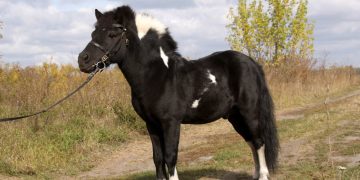If you’ve ever lived with an unspayed female cat, you’re likely familiar with the challenges of feline estrus, commonly known as being “in heat.” A cat in heat experiences hormonal changes that lead to noticeable behavioral and physical symptoms, which can be stressful for both the cat and her owner. This guide provides an in-depth breakdown of what to do when your cat is in heat, helping you manage her estrus cycle with care and confidence.
Understanding Feline Estrus: What Does it Mean When a Cat is in Heat?
Estrus refers to the fertile phase of a female cat’s reproductive cycle, during which she is ready to mate. Cats are seasonally polyestrous, meaning they can go into heat multiple times during their breeding season, which typically lasts from early spring to late fall.
The heat cycle begins as early as 4-6 months of age, depending on the breed and individual cat. Without spaying or mating, these cycles can recur every 2-3 weeks, creating frequent challenges for pet owners.
How Long Does a Cat Stay in Heat?
A typical heat cycle lasts between 4-7 days, but the duration can vary. If the cat doesn’t mate, she may exit heat briefly before entering another cycle within 1-3 weeks.
Signs Your Cat Is in Heat
Recognizing the symptoms of heat is the first step in providing proper care. Common signs include:
- Loud Vocalization
- Your cat may yowl or cry persistently to attract a mate.
- Restlessness and Pacing
- Cats in heat often appear agitated and move around more than usual.
- Excessive Affection
- You might notice her rubbing against furniture, walls, or people more frequently.
- Tail Positioning
- She may lift her hindquarters and move her tail to the side when petted.
- Increased Urination or Spraying
- Cats often mark their territory with urine, which contains pheromones to signal their fertility.
- Rolling and Kneading
- She may exhibit playful behaviors like rolling on the floor or kneading her paws.
What to Do When Your Cat Is in Heat
Managing a cat in heat requires patience and proactive steps to ensure her comfort while minimizing stress. Here’s a detailed breakdown:
1. Create a Calm and Comfortable Environment
Stress can exacerbate heat symptoms, so it’s important to provide a soothing space for your cat.
- Quiet Area: Designate a quiet room where she can retreat from noise and activity.
- Comfortable Bedding: Provide a soft, cozy bed or blankets for her to relax.
- Dim Lighting: Lower lighting in the room to mimic evening conditions, which may help calm her.
2. Distract Her with Play and Interaction
Interactive play is an excellent way to redirect your cat’s energy and keep her mind occupied.
- Toys: Use feather wands, laser pointers, or puzzle feeders to engage her attention.
- Routine: Stick to a consistent play schedule to create a sense of normalcy during her cycle.
3. Avoid Overstimulation
While some cats may crave attention, avoid stroking her lower back or hindquarters, as this can trigger mating behaviors and increase restlessness.
4. Use Pheromone Diffusers or Calming Products
Synthetic pheromones, like Feliway, can help create a calming environment. These products mimic natural cat pheromones, reducing stress and promoting relaxation.
5. Keep Her Indoors
Prevent your cat from escaping or coming into contact with male cats during her heat cycle to avoid unwanted pregnancies.
- Secure Windows and Doors: Ensure all exits are closed and secure.
- Monitor Outdoor Time: If your cat has outdoor access, keep her indoors until her heat cycle ends.
6. Maintain Proper Hygiene
Cats in heat often urinate more frequently, and some may spray urine around the home.
- Clean Up Promptly: Use enzymatic cleaners to remove odors and discourage repeat marking.
- Litter Box Maintenance: Keep the litter box clean to encourage its use and reduce spraying.
7. Provide Comfort and Reassurance
Your cat may be more affectionate or vocal, signaling a need for extra attention. While avoiding overstimulation, gentle petting and talking to her in a soothing voice can provide comfort.
Is There a Long-Term Solution? Spaying Your Cat
Spaying is the most effective way to manage heat cycles and eliminate the associated behaviors. The procedure, which involves removing the ovaries and uterus, is safe and widely recommended by veterinarians.
Benefits of Spaying
- Prevents Heat Cycles: Eliminates the behavioral and physical symptoms of estrus.
- Reduces Health Risks: Spaying lowers the risk of uterine infections (pyometra) and mammary cancers.
- Prevents Unwanted Litters: Helps control the population of stray and homeless cats.
- Improves Quality of Life: Reduces stress for both the cat and owner.
Spaying is typically recommended before the first heat cycle, which can occur as early as 4-6 months of age. If your cat has already gone into heat, consult your veterinarian about the best time for the procedure.
When to Consult a Veterinarian
If you notice any unusual symptoms or behaviors during your cat’s heat cycle, seek veterinary advice. Warning signs include:
- Prolonged or frequent heat cycles (more than every 2-3 weeks).
- Vaginal bleeding or unusual discharge.
- Signs of pain or distress unrelated to heat.
Tips for Managing a Cat in Heat Without Spaying
While spaying is the most effective solution, some pet owners choose not to spay their cats for various reasons. If spaying isn’t an option, consider these tips:
- Regularly clean areas where your cat sprays.
- Limit exposure to male cats by keeping her indoors.
- Use herbal or natural calming supplements after consulting a vet.
Key Takeaways
Caring for a cat in heat requires understanding, patience, and practical strategies to manage her behavior and comfort. By providing a calm environment, engaging her in play, and considering long-term solutions like spaying, you can ensure your cat’s well-being while minimizing stress for both of you.
If you’re unsure about the best approach, consult your veterinarian for personalized advice tailored to your cat’s needs.

























